Working with triggers
For a show, it is sometimes necessary that several trades (light, sound, media, pyrotechnics, laser, ...) work together.
Each trades will use its own controller / software. Previously, the interaction between the controllers / software was only possible via MIDI or via a time code.
The LiveShow software provides an additional, and easier for the user, ability to synchronize and schedule actions on time.
- The SPIT-Protocol -
The Prinziple
In the LiveShow software, triggers can be created and dragged into the timeline, triggering actions in other software.
The prerequisite
for this is that the other software supports the bidirectional SPIT
protocol (the protocol can be downloaded from the LiveShow homepage).
Triggers are sent over the network as UDP packets. The LiveShow software acts as a server and other software as a client.
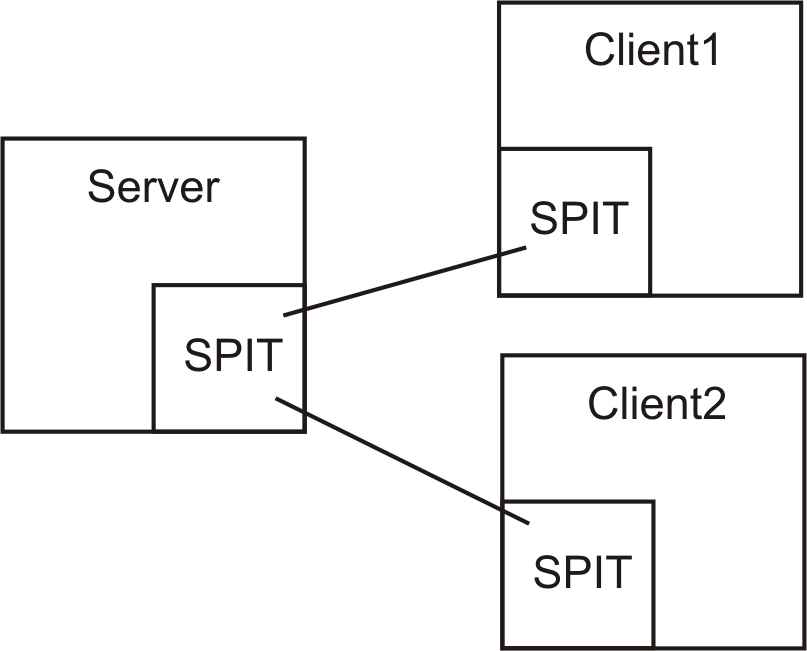
Thus, via the SPIT protocol, e.g. Fireworks software or laser software can be controlled remotely. In
other words, trigger objects in the timeline can ignite the effect in
the fireworks software or control the playback of a laser animation in
the laser software.
Conversely, the
LiveShow software reports certain trigger commands to the client software so
that the client can, to a certain extent, remotely control the LiveShow
software.
The functioning
Client software that supports the SPIT protocol can log on to the LiveShow software over the network.
Triggers consist of two parts:
- the trigger type, he describes by name an action that is executed in another software.
It
is a pure name description, without specifically going into the
realization of an action - this is the task of the client software.
- The trigger object that results when a trigger type is dragged into the timeline or jingle window.
A
trigger type can be dragged several times into the timeline or into the
jingle window, in each case new trigger objects are created.
If
an object is played in the timeline or in the jingle, this is
communicated to the client and this can trigger a corresponding action.
Trigger types (SPIT types) can be created in the LiveShow software or in the client software. These SPIT types are exchanged between client software and LiveShow software.
A SPIT type describes the type of action to be performed on the opposite side. This is just a description, the LiveShow software has no information on how the action is performed on the client. A trigger is triggered only when a trigger object, e.g. played in the timeline.
Since everything is named by name, the user on the other side can access the meaning of the content.
A small example: We generate a trigger type and give it the name "flower".
This trigger type is drawn twice in the timeline. Two trigger objects
are created, each pointing to the trigger type "flower" but standing in
different places. In a laser software you could create an animation
that projects a flower. Whenever the timeline play cursor enters one of
the trigger objects, the laser software is notified and projects a
flower.
The
LiveShow software has no knowledge of the function of a laser, it
notifies the laser software only that now the trigger "flower" is to be
played.
see Menu:  Media -
Media -  Trigger
Trigger
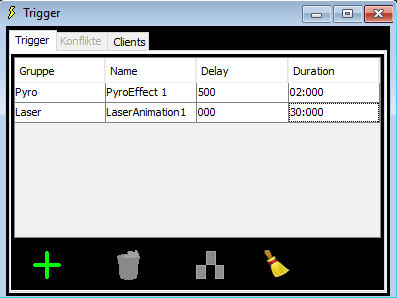
see also: Help Trigger
A SPIT type can be dragged into the Timeline media area in the LiveShow software.
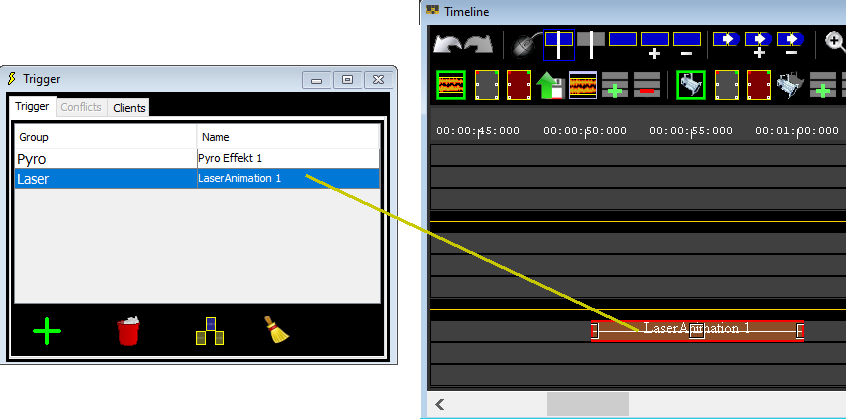
A new SPIT object was created.
A trigger type can also be dragged into the media area of the jingle window.
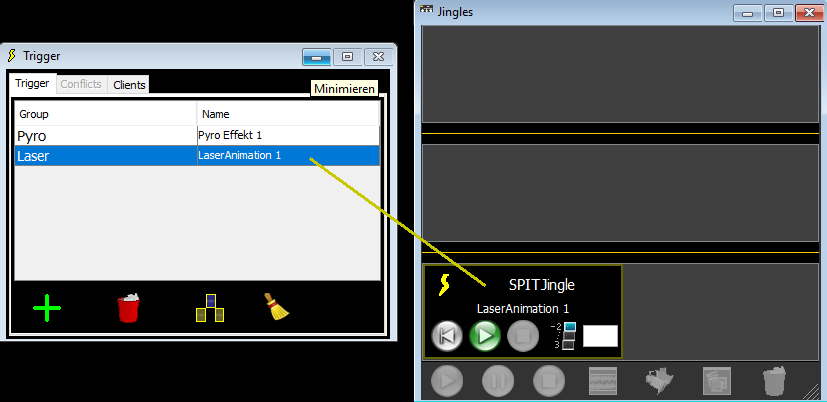
A new SPIT object was created.

The SPIT object has similar properties and behaviors, such as media, sound, or DMX objects.
Double-clicking
on the SPIT object opens the object properties window in which the SPIT
object properties can be entered numerically.
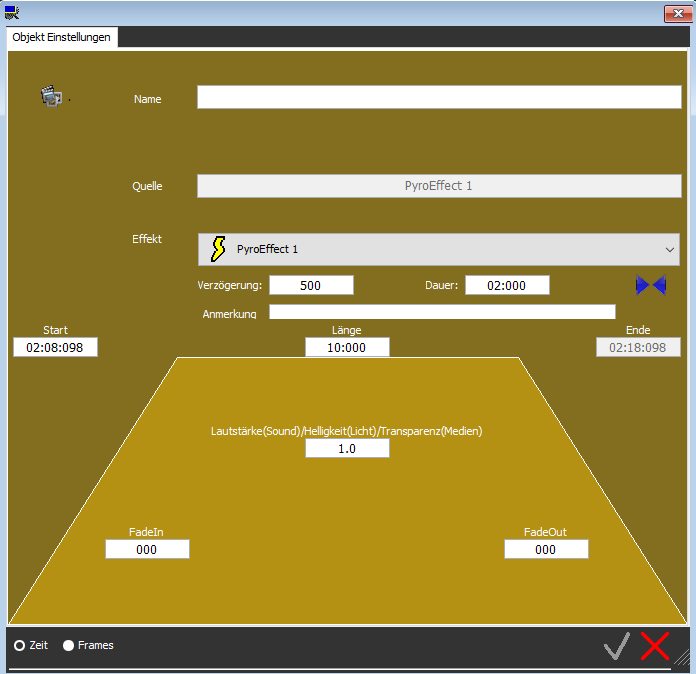
| Delay |
Here, a delay time can be specified. For a pyro effect, this could e.g. be the climb time.
In the SPIT object, this is indicated by a green line.
|
| Dauer |
Here, the duration of an action is indicated, e.g. the duration of a laser animation.
In the SPIT object, this is indicated by a red line. |
| Remark |
Here you can enter a remark (max 63 characters) |
 |
Here, the length (duration) of the SPIT object is adapted to the delay and duration. |
As described above, the creation of SPIT types and the creation of SPIT objects are communicated to the client software.
Likewise, all changes and timeline playback (the SPIT objects) are reported to the client software via the SPIT-Protocol.
If a SPIT object is played, only the times and all content information are transmitted to the client software. What exactly is triggered must be implemented in the respective client software.
In a client software, this might look like this:
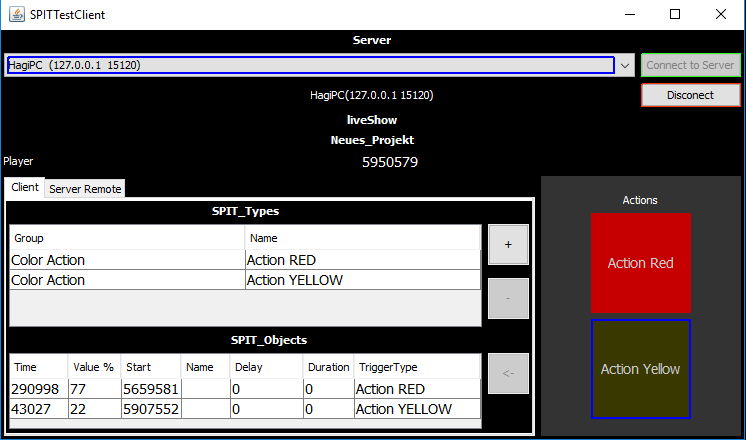
The corresponding objects in the timeline of the LiveShowSoftware:
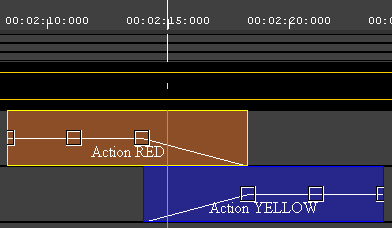

 Trigger
Trigger





